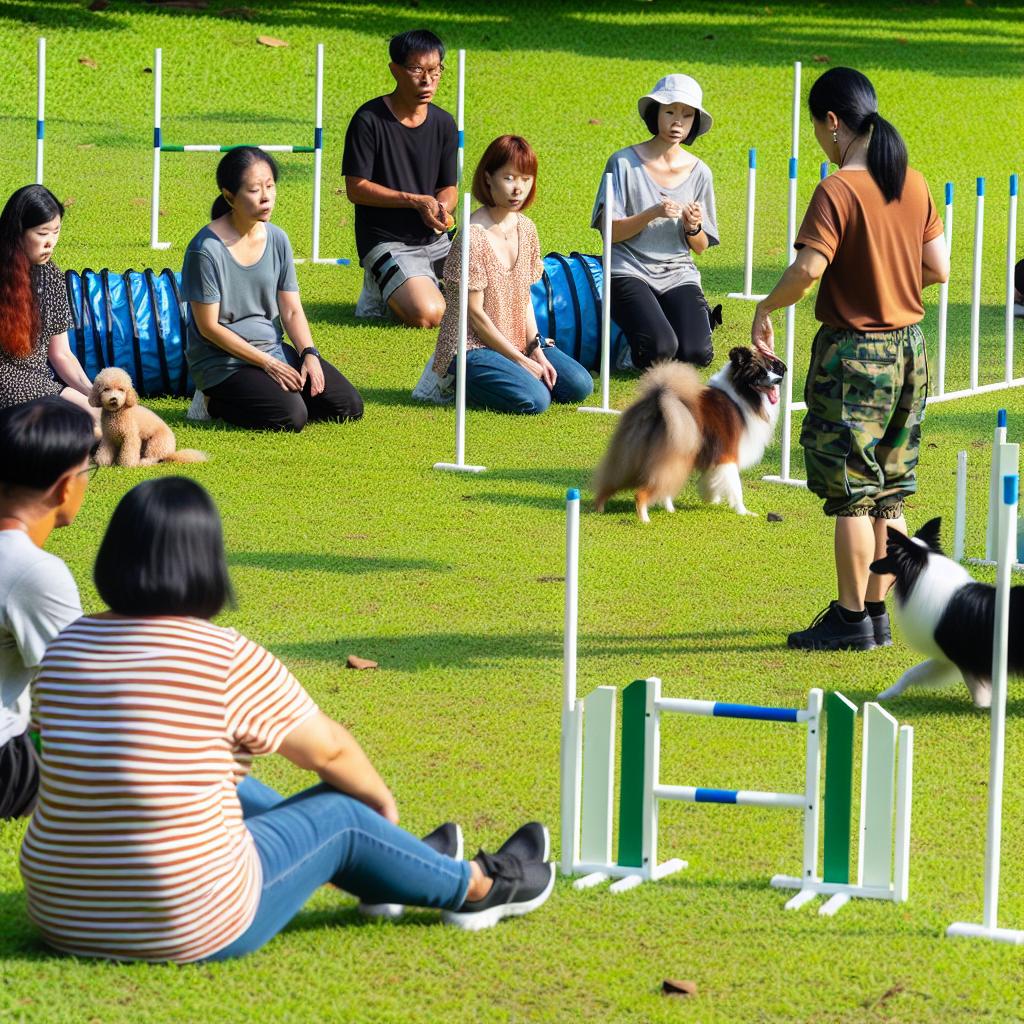
Understanding dog behavior is fundamental for any beginner aiming to train their pet effectively. Recognizing the unique ways in which dogs communicate is crucial to this process. Unlike humans, dogs use a combination of vocalizations, body language, and other non-verbal cues to express their thoughts and emotions. For example, a dog may wag its tail, growl, or change its ear positioning to indicate how it is feeling. By observing these signals, owners have a valuable tool at their disposal to adapt their training strategies to better suit their dogs’ individual needs and personalities.
Before advancing to more complex training techniques, it’s essential to establish basic commands that form the basis of a well-behaved dog. Commands such as “sit,” “stay,” “come,” and “leave it” are critical in setting the groundwork for future training endeavors. When teaching these commands:
Consistent Language and Gestures: One of the primary components of effective command training is the use of consistent language and gestures. Dogs thrive on routine and consistency. By using the same words and gestures each time, you minimize confusion and reinforce the behavior you are trying to teach.
Rewarding Positive Behavior: Positive reinforcement plays a pivotal role in training. Providing treats and verbal praise when your dog successfully follows a command reinforces the desired behavior, making it more likely to occur again in the future.
Patience Through Repetition: Patience is equally important, as repetition is key to ensuring that your dog comprehends and retains the commands. Each dog learns at its own pace, so it’s crucial to remain patient and persistent throughout the training process.
Clicker training is a widely used technique in dog training, known for its effectiveness in instilling positive behaviors. This method utilizes a small device that produces a distinct sound when pressed, marking the precise moment a desired behavior is performed. Here’s a deeper insight into its implementation:
Upon issuing a command, immediately press the clicker as soon as your dog performs the desired action. This instant marking of the behavior is followed by a treat, creating a direct association between the command, the behavior, and the reward. Over time, this method can greatly speed up the learning process and solidify the association between commands and positive reinforcement.
The concept of positive reinforcement is foundational in dog training. It shifts the focus from scolding or punishing undesirable behaviors to acknowledging and rewarding good behaviors. This change in approach fosters an environment of trust and cooperation between owner and pet. Here’s why it is effective:
Rewards, whether they are treats, affection, or playtime, act as powerful motivators for dogs. When a dog realizes that a specific behavior results in a positive outcome, it is naturally inclined to repeat the behavior. Gradually, as the dog learns to perform these behaviors consistently, you can reduce the frequency of the treats, transitioning the dog into maintaining these behaviors with less external motivation.
Consistency is arguably the most crucial element of dog training. It involves maintaining uniformity in the commands, hand signals, rewards, and even the tone of voice used during training. Inconsistent training can lead to confusion in dogs, potentially stalling the learning process. By involving all family members and ensuring that everyone is on the same page with training techniques and rules, the training experience becomes more seamless and effective for the dog.
Socialization is a critical but often overlooked component in a dog’s training regimen, especially for puppies. The process involves exposing your dog to a variety of environments, people, and other animals. This exposure is vital for several reasons:
Proper socialization can actively reduce fearfulness and aggression in dogs by familiarizing them with new and diverse experiences. When a dog is comfortable and confident in a wide range of settings, this adaptability contributes to its behavioral development, making them well-adjusted adults.
For those unsure where to start, numerous resources offered through reputable pet organizations can provide guidance on effectively socializing your dog.
During the training process, beginners can unknowingly make mistakes that impede their progress. Here are some common pitfalls and how to avoid them:
Inconsistency: As previously mentioned, inconsistent commands and training methods can confuse dogs. Remaining consistent with commands and training sessions is essential.
Excessive Corrections: Over-correcting or frequently punishing your dog for mistakes can damage the trust and bond between you and your pet. Dogs respond better to positive reinforcement rather than focus on their missteps.
Overloading Sessions: Dogs have limited attention spans, so it’s crucial to keep training sessions short and focused. This ensures the dog remains attentive and engaged, thereby improving retention rates.
Training a dog effectively requires diligence, patience, and an understanding of the underlying principles guiding canine behavior. By employing these foundational techniques, beginners can cultivate a training environment that is both effective and enjoyable for their dogs, paving the way for a rewarding relationship built on mutual understanding and respect.